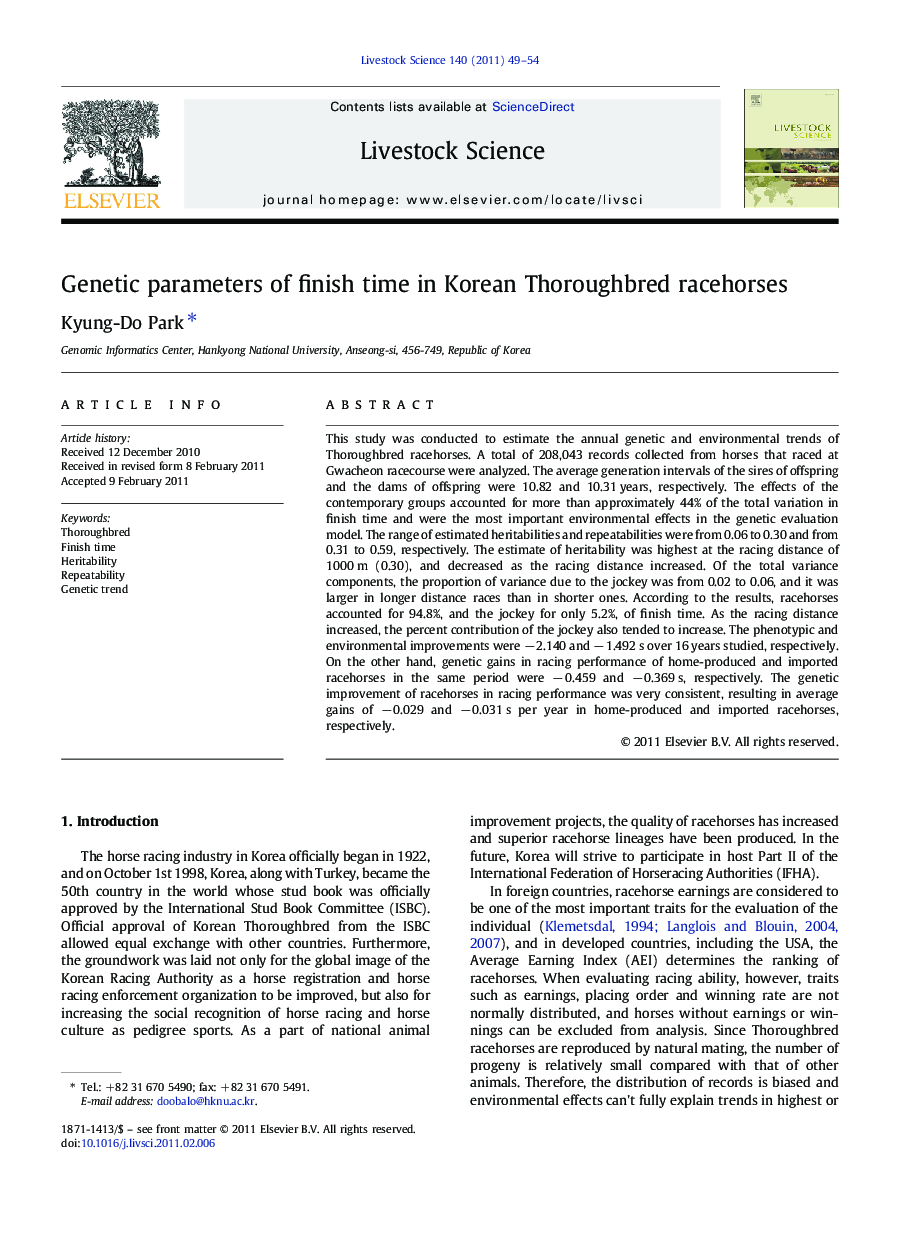| Article ID | Journal | Published Year | Pages | File Type |
|---|---|---|---|---|
| 5790876 | Livestock Science | 2011 | 6 Pages |
Abstract
This study was conducted to estimate the annual genetic and environmental trends of Thoroughbred racehorses. A total of 208,043 records collected from horses that raced at Gwacheon racecourse were analyzed. The average generation intervals of the sires of offspring and the dams of offspring were 10.82 and 10.31 years, respectively. The effects of the contemporary groups accounted for more than approximately 44% of the total variation in finish time and were the most important environmental effects in the genetic evaluation model. The range of estimated heritabilities and repeatabilities were from 0.06 to 0.30 and from 0.31 to 0.59, respectively. The estimate of heritability was highest at the racing distance of 1000 m (0.30), and decreased as the racing distance increased. Of the total variance components, the proportion of variance due to the jockey was from 0.02 to 0.06, and it was larger in longer distance races than in shorter ones. According to the results, racehorses accounted for 94.8%, and the jockey for only 5.2%, of finish time. As the racing distance increased, the percent contribution of the jockey also tended to increase. The phenotypic and environmental improvements were â 2.140 and â 1.492 s over 16 years studied, respectively. On the other hand, genetic gains in racing performance of home-produced and imported racehorses in the same period were â 0.459 and â 0.369 s, respectively. The genetic improvement of racehorses in racing performance was very consistent, resulting in average gains of â 0.029 and â 0.031 s per year in home-produced and imported racehorses, respectively.
Related Topics
Life Sciences
Agricultural and Biological Sciences
Animal Science and Zoology
Authors
Kyung-Do Park,
